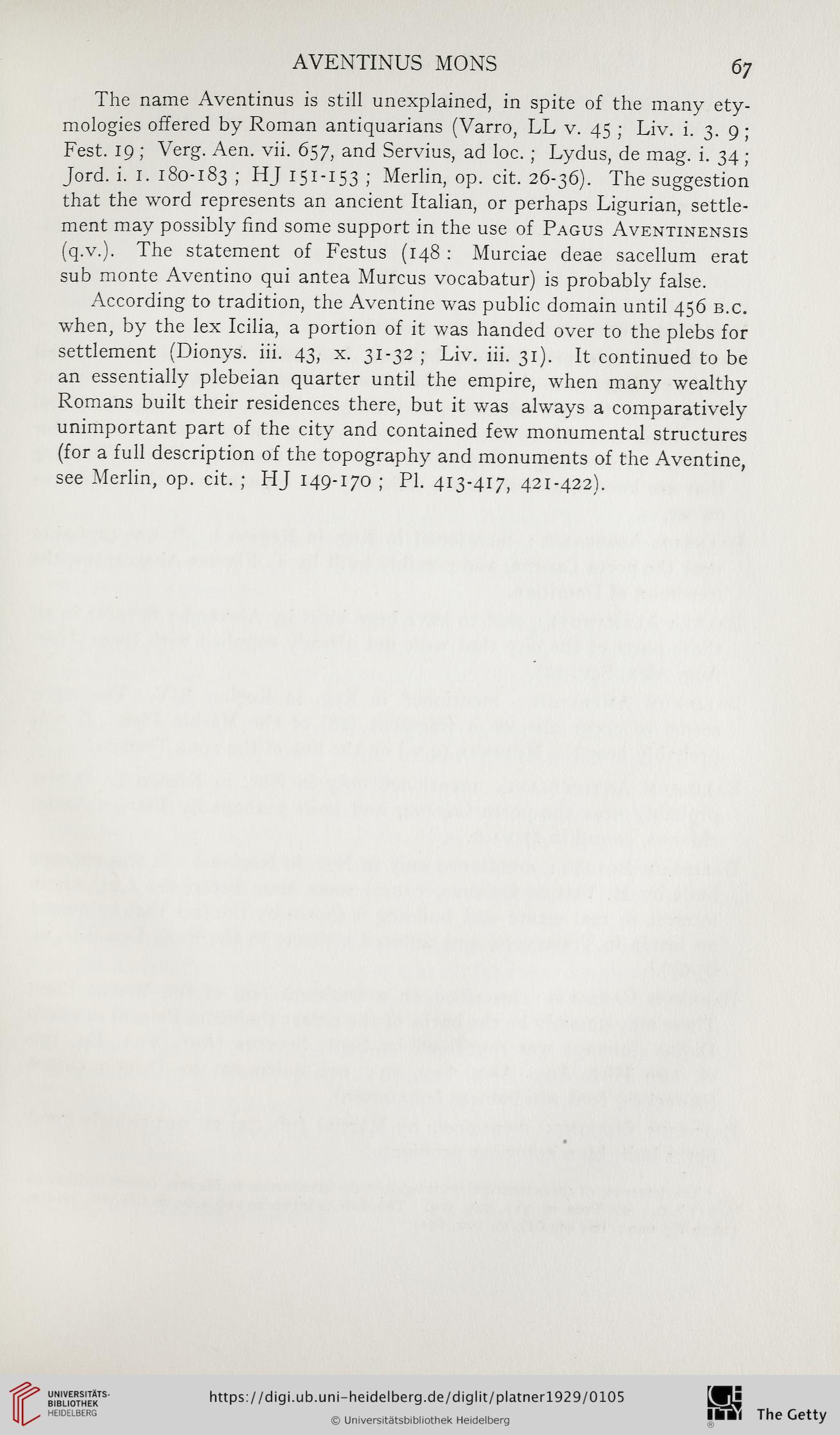AVENTINUS MONS
67
The name Aventinus is still unexplained, in spite of the many ety-
mologies offered by Roman antiquarians (Varro, LL v. 45 ; Liv. i. 3. 9 ;
Fest. 19 ; Verg. Aen. vii. 657, and Servius, ad loc. ; Lydus, de mag. i. 34 ;
Jord. i. 1. 180-183 ; HJ 151-153 ; Merlin, op. cit. 26-36). The suggestion
that the word represents an ancient Italian, or perhaps Ligurian, settle-
ment may possibly find some support in the use of Pagus Aventinensis
(q.v.). The statement of Festus (148 : Murciae deae sacellum erat
sub monte Aventino qui antea Murcus vocabatur) is probably false.
According to tradition, the Aventine was public domain until 456 b.c.
when, by the lex Icilia, a portion of it was handed over to the plebs for
settlement (Dionys. iii. 43, x. 31-32 ; Liv. iii. 31). It continued to be
an essentially plebeian quarter until the empire, when many wealthy
Romans built their residences there, but it was always a comparatively
unimportant part of the city and contained few monumental structures
(for a full description of the topography and monuments of the Aventine,
see Merlin, op. cit. ; HJ 149-170 ; Pl. 413-417, 421-422).
67
The name Aventinus is still unexplained, in spite of the many ety-
mologies offered by Roman antiquarians (Varro, LL v. 45 ; Liv. i. 3. 9 ;
Fest. 19 ; Verg. Aen. vii. 657, and Servius, ad loc. ; Lydus, de mag. i. 34 ;
Jord. i. 1. 180-183 ; HJ 151-153 ; Merlin, op. cit. 26-36). The suggestion
that the word represents an ancient Italian, or perhaps Ligurian, settle-
ment may possibly find some support in the use of Pagus Aventinensis
(q.v.). The statement of Festus (148 : Murciae deae sacellum erat
sub monte Aventino qui antea Murcus vocabatur) is probably false.
According to tradition, the Aventine was public domain until 456 b.c.
when, by the lex Icilia, a portion of it was handed over to the plebs for
settlement (Dionys. iii. 43, x. 31-32 ; Liv. iii. 31). It continued to be
an essentially plebeian quarter until the empire, when many wealthy
Romans built their residences there, but it was always a comparatively
unimportant part of the city and contained few monumental structures
(for a full description of the topography and monuments of the Aventine,
see Merlin, op. cit. ; HJ 149-170 ; Pl. 413-417, 421-422).




